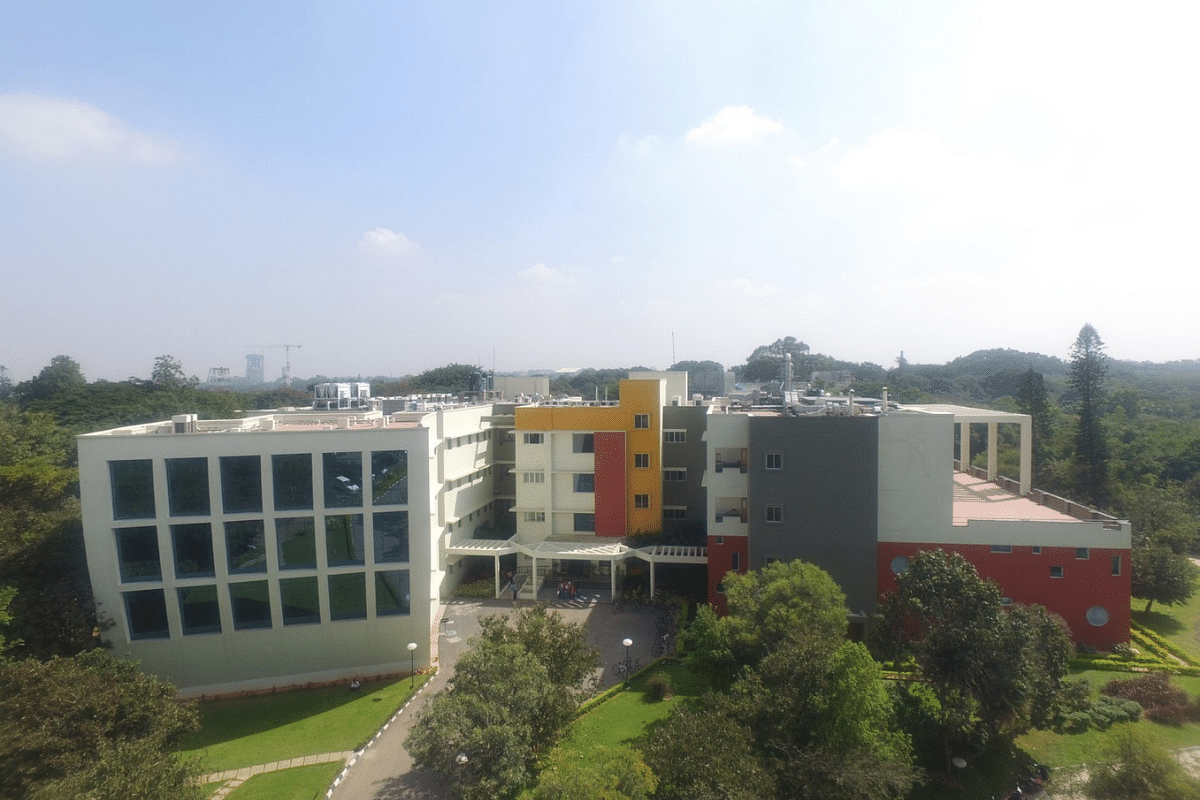Science
Semiconductor Ecosystem In India: IISc Set To Launch An MTech Programme In Semiconductor Technology This Academic Year
- The global talent shortage, and therefore need, for semiconductor fabs is an opportunity for India.

The Centre for Nano Science and Engineering (CeNSE) of the Indian Institute of Science (IISc)
India’s aspiration to grow a semiconductor and display manufacturing ecosystem will necessarily require a talent pool equipped with relevant skills and those who are as close to market-ready as possible.
One of the driving factors in this regard would be the availability of relevant academic programmes at India’s top educational institutions.
In response to the demand for a skilled workforce and cutting-edge research and development (R&D) in semiconductor technology, the Indian Institute of Science (IISc), Bengaluru, is initiating an interdisciplinary programme later this year.
The IISc’s Centre for Nano Science and Engineering (CeNSE) is launching a Master of Technology (MTech) programme in Semiconductor Technology from the academic year 2023-24. The course work will begin in August 2023.
For their minor, students will get to choose from a buffet of thematic areas — nanoelectronics, nanobio, photonics, microsystems and packaging, quantum technology (in collaboration with Indian Quantum Science Initiative) and materials (in collaboration with the Department of Materials Engineering).
“The objective is to cater to the fast-growing semiconductor ecosystem in the country in particular and in the world in general while retaining the multi-disciplinary flavor of the erstwhile M. Tech program in Nano Science & Engineering,” CeNSE says on its dedicated webpage about the programme.
Approximately 20 students that will be picked for the two-year programme will benefit from industrial interactions, internships, scholarships, and fellowships, as well as cutting-edge R&D facilities.
Intel, Lam Research, MacDermid Alpha, and Applied Materials are already collaborating with CeNSE as part of its industry-sponsored fellowship offering at the MTech level.
CeNSE is a nearly 13-year-old centre at IISc pursuing interdisciplinary research on the nanoscale. It houses two state-of-the-art national facilities — the National Nanofabrication Centre (NNfC) and the Micro and Nano Characterization facility (MNCF) — besides 17 laboratories managed by various research groups.
A Masters programme with an exclusively semiconductor focus isn’t entirely new in India.
Last year (July 2022), the Indian Institute of Technology, Hyderabad, initiated an MTech programme in Semiconductor Materials and Devices.
Offered by the Materials Science and Metallurgical Engineering department, the programme is said to be “in line with the recent expansion of the vision of Aatmanirbhar Bharat in setting up of India Semiconductor Mission.”
Chipmakers like Intel, Taiwan Semiconductor Manufacturing Company (TSMC), and Samsung are all trying to expand their manufacturing capacity, but this can't happen if there aren't enough engineers to design, fabricate, and verify the chips, among various other roles needed in the semiconductor industry.
Deloitte predicts that by 2030, more than one million additional skilled workers, beyond the over two million directly employed worldwide in 2021, will be needed to meet demand in the semiconductor industry. That amounts to an addition of more than 100,000 workers annually.
The global talent shortage, and therefore need, for semiconductor fabs (building, operation, and analyses — at various levels of academic qualification) is an opportunity for India.
Prime Minister Narendra Modi even said last year that India wants to be a "chip maker and not just a chip taker". India will need a good talent pool of engineers for building and operating fabs in the near future.
The India Semiconductor Mission — launched to establish and handhold the semiconductor manufacturing ecosystem in India — is taking steps towards building a talent pool, such as through the Chips to Startup (C2S) programme.
Further, the All India Council for Technical Education (AICTE) in April last year approved two new courses in integrated circuit (IC) manufacturing and VLSI (very large scale integration) design and technology to help build a skilled and market-ready workforce for the semiconductor and display manufacturing industry.
“Practically any electronic device you can think of - mobile, TV, laptop, car dashboard - has the semiconductor as its brain and display glass as its body. No device can be made without both elements,” the Chairman of Vendanta Group, Anil Agarwal, wrote in the Economic Times.
“India is in pole position to become the fifth” country to manufacture both semiconductors and display glass.
Speaking last month at the World Economic Forum Annual Meeting 2023, the Electronics and Information Technology Minister, Ashwini Vaishnaw, said: “We see a huge potential for India to become a key semiconductor supplier for the entire world,” adding that “we have tied up with many universities to prepare right talent”.
On the back of the dedicated production-linked incentive (PLI) and ‘Make in India’ schemes, India’s semiconductor component market will see its cumulative revenues climb to $300 billion during 2021-2026, according to the ‘India Semiconductor Market Report, 2019-2026’, a joint research by the India Electronics & Semiconductor Association (IESA) and Counterpoint Research.
Introducing ElectionsHQ + 50 Ground Reports Project
The 2024 elections might seem easy to guess, but there are some important questions that shouldn't be missed.
Do freebies still sway voters? Do people prioritise infrastructure when voting? How will Punjab vote?
The answers to these questions provide great insights into where we, as a country, are headed in the years to come.
Swarajya is starting a project with an aim to do 50 solid ground stories and a smart commentary service on WhatsApp, a one-of-a-kind. We'd love your support during this election season.
Click below to contribute.
Latest